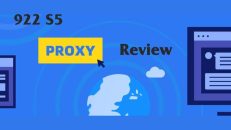
Nowadays social media is not just about “writing funny posts on Facebook” – it has grown to a new, intelligent online marketing channel. Out of all other ways of reaching your customers (also offline), where would you be able to target as specific as for example mountain bike enthusiasts who’ve been travelling in the past 6 months to Canada and just got a new job? I can’t think of any other medium than social media. Yes, it’s that “writing funny posts on Facebook” thing.
So why is it important to draft your social media strategy today? When should you think about it when setting your online business? The answer is yesterday. Why? Because all your customers are out there already. Your competitors are probably beginning to work it out. I take a step back and look at my own blog – where did I start publishing my first posts?
And where was my traffic coming from? LinkedIn, Facebook, Twitter and Pinterest. No newsletters, paid ads, display campaigns or affiliates. Sure, they’re on board later, once your traffic becomes substantial; however there is no other means than social media that will get you eyeballs instantly.
What do I mean exactly by “Social Media Strategy“? Well, it’s either a strategy to grow your social media following and finding your true customers there or driving traffic to your website through social media campaigns. You need a solid plan including goals you want to achieve, what actions will you take and when, finishing with results and key learnings.
Are you one of those people who like to have things drafted on paper? Fair enough! I’ve created this one-page Social Media Strategy Plan or a canvas, as you might call it, to help you sketch a sound model of your social media:
This model can be used for any campaign that you plan to launch online, e.g. a new product launch, new website, new video or an event. Print it out (the empty version is available here) and start sketching!
1Step 1: Think about the KEY OBJECTIVES of your social media campaign
Step 1: Think about the KEY OBJECTIVES of your social media campaign
Here is your starting point – what is it that you truly want to achieve here? Why would social media help you achieving that? Keep your conversion in mind – what does a conversion mean here – is that a click-through to your website? A special landing page?
A video view? An email address? Or a product review? Never think about random objectives, like “I want to get more likes”. This will not get you money – you need to think about a conversion, either short-term or long term.
2Step 2: What key results do you want to see in month 1, 2 and 3?
Step 2: What key results do you want to see in month 1, 2 and 3?
Whilst an objective (one only!) is very general, here it’s about being more concrete. What 3 key results would you like to achieve after first month? And in the second or third? Write down up to 3 results per month, however feel free to change it to weeks or adding more boxes –
it’s up to you how long you want to keep it live. Do you want to get an X amount of sessions or referrals? Perhaps more followers on Twitter? Or more interaction with your followers on Facebook? Be specific and be REASONABLE.
3Step 3: Choose the social media platform(s)
Step 3: Choose the social media platform(s)
Get to know your followers and find out where they mainly are active and at what times of the day. Are they more on Pinterest after work or on holidays?
What do they follow and which content do they respond to most? Where are your competitors and how are they performing? Do you understand each and every social media platform?
4Step 4: Determine your content marketing strategy
Step 4: Determine your content marketing strategy
It’s as simple as finding out the type of content you are going to post; to which audiences and on which social media platforms.
Decide what time of the day you will post what and how often.
Remember, it’s not about posting the same thing everywhere. Consistency is important, however each platform requires customization. And it’s not only about
the sizes of images or the number of characters – an update on a blog post has a different impact on me than a pin or a photo shared on Snapchat.
5Step 5: Determine the KPIs per social media platform
Step 5: Determine the KPIs per social media platform
Once you’ve agreed via which platforms you will reach your people, sketch few Key Performance Indicators per platform. What is the difference between key results and key performance indicators? KPIs (if you choose them and monitor) will lead you to key results – in other words, you can’t find out if key results were achieved without KPIs. Why it’s important to choose KPI per platform?
Because each platform is different – let’s say I want to increase female audience on social media – will this mean the same amount of women have accounts on Pinterest as well as Periscope?
This model allows you also to choose KPIs per month – it allows you to forecast % growth that will lead to your main objective.
6Step 6: Investigate timings and frequency of social media updates
Step 6: Investigate timings and frequency of social media updates
This goes hand in hand with reseraching the type of content you want to publish. When is the best time to reach your followers and where. Would they notice that
the same content is scheduled twice but in a different form or on a different platform? This infographic from CoSchedule might be useful:
7Step 7: Time to schedule your content!
Step 7: Time to schedule your content!
Once you’ve researched the best timings per platform and frequencies of your postings, it’s time to get more organized. Don’t post randomly or whenever you feel like. The truth is, after few days you will forget or have no inspiration to post something engaging. Reserve some time in the week to think your plan through and see it through the eyes of your follower – is the order of your postings logical? Does it tell a good story? Does it lead to your main objective? Will you achieve your key results in time?
Get used to working with a content marketing calendar – this allows you to day by day, week by week, write down the objectives and postings per platform. If you work in a team, it’s a great way to divide work and see who’s busy on what. Are you still testing and reviewing your content? Then a content calendar is your solution.
There are great tools online to help you out – try out the free trial version from Hootsuite or CoSchedule or a WordPress Plugin Editorial Calendar. For more advanced B2B solutions, Kapost might be useful.
8Step 8: Listen to your followers: monitor reactions and engage
Step 8: Listen to your followers: monitor reactions and engage
This step is very important – social media strategy is not about getting content out there. Otherwise, it wouldn’t be called “social”. It’s about engaging and observing how your followers react. Do they ask questions? Tag their friends? Thank them for replies! Suggest new content to follow or connect with them directly! Does your content stimulate discussions or is it an empty post? Are you being mentioned by your followers? Where and when? And in a good or bad way?
How would you keep track of it anyway? There are tools to help you out. Hootsuite allows you to add different boards per platform mentioning your handle, company name or hashtag. SproutSocial can send you daily emails mentioning your company name. Use Google Alerts if you’re used to Google Products.
9Step 9: Collect results and compare with your KPIs
Step 9: Collect results and compare with your KPIs
Here is where you collect all data from all platforms month by month to see if your KPIs were achieved.
This will allow you to understand where you under or over-performed. Make sure you collect relevant data, it’s not about quantity here!
10Step 10: Write down your key learnings and improve!
Step 10: Write down your key learnings and improve!
Include your achievements, points to improve and things you’ve learnt. Write recommendations for the following months or campaigns. This allows you to take concrete conclusions based on concrete data.
Was your objective finally reached? When? And if not, where did you struggle? Remember, it’s all about constant learning – don’t assume your strategy will be perfect from day one. As long as you’re true to yourself and being able to take conclusions – you’re on the right path to master your social media!
What do you think? Is the model useful for you? Would you sketch it differently? Let me know in the comments below, also happy to improve! 🙂










